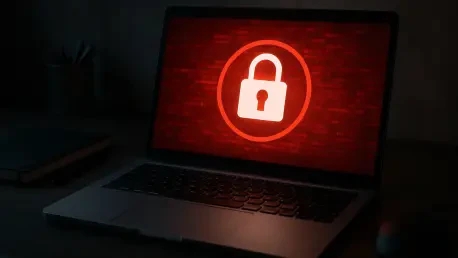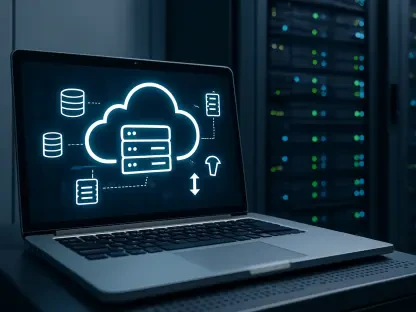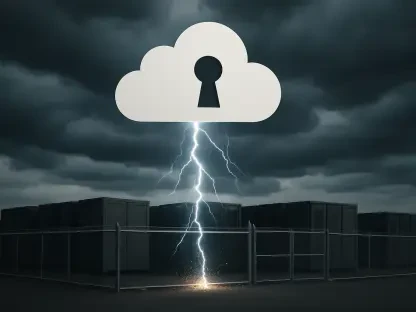Welcome to an insightful conversation on the growing threat of ransomware attacks. Today, we’re joined by Maryanne Baines, a renowned authority in cloud technology with extensive experience evaluating tech stacks and security solutions across industries. With ransomware becoming an escalating concern for organizations worldwide, Maryanne brings a unique perspective on how these attacks exploit vulnerabilities and what businesses can do to protect themselves. In this interview, we’ll explore the alarming frequency of ransomware incidents, the real consequences of paying ransoms, the tactics used by attackers, and the critical gaps in organizational defenses that leave so many at risk.
How prevalent are ransomware attacks in today’s landscape, and what patterns are you seeing with organizations being targeted multiple times?
Ransomware attacks are incredibly common right now, and the numbers are staggering. Recent data shows that over half of organizations—57%, to be precise—have experienced a successful ransomware attack in the past year alone. What’s even more concerning is that nearly a third of these victims get hit more than once. This repeat targeting often happens because the initial attack exposes weaknesses that aren’t fully addressed afterward, or attackers leave behind backdoors for future access. It’s a vicious cycle, and it highlights how fragmented and ineffective many defenses still are.
What are the outcomes for organizations that decide to pay the ransom, and how often does this actually solve their problem?
Paying the ransom is a gamble that doesn’t always pay off. About 32% of victims end up paying, and that number creeps up to 37% for those hit multiple times. However, the harsh reality is that 41% of those who pay don’t recover all their data. Sometimes the decryption tools provided by attackers don’t work, or they’re incomplete. In other cases, files get damaged during encryption or decryption, or the attackers simply take the money and disappear without providing any recovery tools. It’s a stark reminder that there’s no honor among thieves.
What kinds of pressures do organizations face that push them toward paying the ransom?
The pressure to pay can be intense and multifaceted. Attackers often escalate their threats beyond just locking data—they target partners, shareholders, and customers with intimidation tactics, which happens in over 20% of cases. They might threaten to leak sensitive information or disrupt critical operations. Additionally, about 16% of incidents involve direct threats to employees, which adds a personal and emotional layer to the crisis. These tactics are designed to create panic and force quick decisions, often bypassing rational assessment of the risks of paying.
How well-equipped are most organizations to defend against ransomware, and where do you see the biggest vulnerabilities?
Unfortunately, many organizations are woefully underprepared. For instance, only 47% of ransomware victims had basic email security solutions in place, compared to 59% of non-victims. Email is a common entry point for these attacks, so that gap is significant. Beyond that, the difference between victims and non-victims often comes down to fragmented security tools that don’t work together or aren’t configured properly. These disconnected systems create blind spots that attackers exploit. The biggest vulnerability, in my view, is the lack of a cohesive, integrated security strategy—too many businesses are juggling tools without a clear plan.
Can you walk us through the common tactics ransomware attackers use to maximize damage and control?
Attackers have a playbook that’s both sophisticated and ruthless. About a quarter of incidents involve data encryption, while 27% see data stolen and published online to shame or pressure victims. Beyond that, 29% of cases involve additional malicious software being installed, and 21% include backdoors for long-term access. They also make recovery harder by wiping backups or deleting shadow copies of files in roughly one in five attacks. Their goal is to lock victims out of every possible recovery option, forcing them to pay or face permanent loss.
What are the ripple effects of ransomware attacks on a business beyond just the immediate data loss?
The impact goes far beyond encrypted files—it’s a full-blown business crisis. Around 40% of victims suffer reputational damage, which can erode trust with clients and partners. About a quarter report direct financial losses from downtime or recovery costs, and a similar number lose out on new business opportunities or deals because of the disruption. These attacks can stall growth, damage credibility, and create long-term setbacks that are hard to quantify but deeply felt across the organization.
Why do you think the severity and impact of ransomware attacks are increasing over time?
The severity is climbing for several reasons. First, attackers are getting smarter—they’re using more advanced techniques like lateral movement across networks, privilege escalation, and embedding persistence mechanisms to stay undetected longer. Second, the stakes are higher as businesses become more digitized; there’s simply more valuable data to target. Finally, the lack of unified security defenses means many organizations can’t keep up with evolving threats. It’s a perfect storm of sophisticated attacks meeting inadequate preparation, and the damage is compounding as a result.
What is your forecast for the future of ransomware threats, and how should organizations prepare for what’s coming?
I believe ransomware will continue to grow in both frequency and complexity over the next few years. Attackers are likely to double down on multi-layered strategies, combining encryption, data theft, and network persistence to maximize leverage. We might also see more targeted attacks on specific industries like healthcare or critical infrastructure, where the pressure to pay is immense. For organizations, the key is to move toward integrated security platforms that eliminate gaps, prioritize regular backups with air-gapped protection, and invest in employee training to spot phishing attempts. Preparation isn’t just about tools—it’s about building a culture of resilience and vigilance to stay one step ahead.









